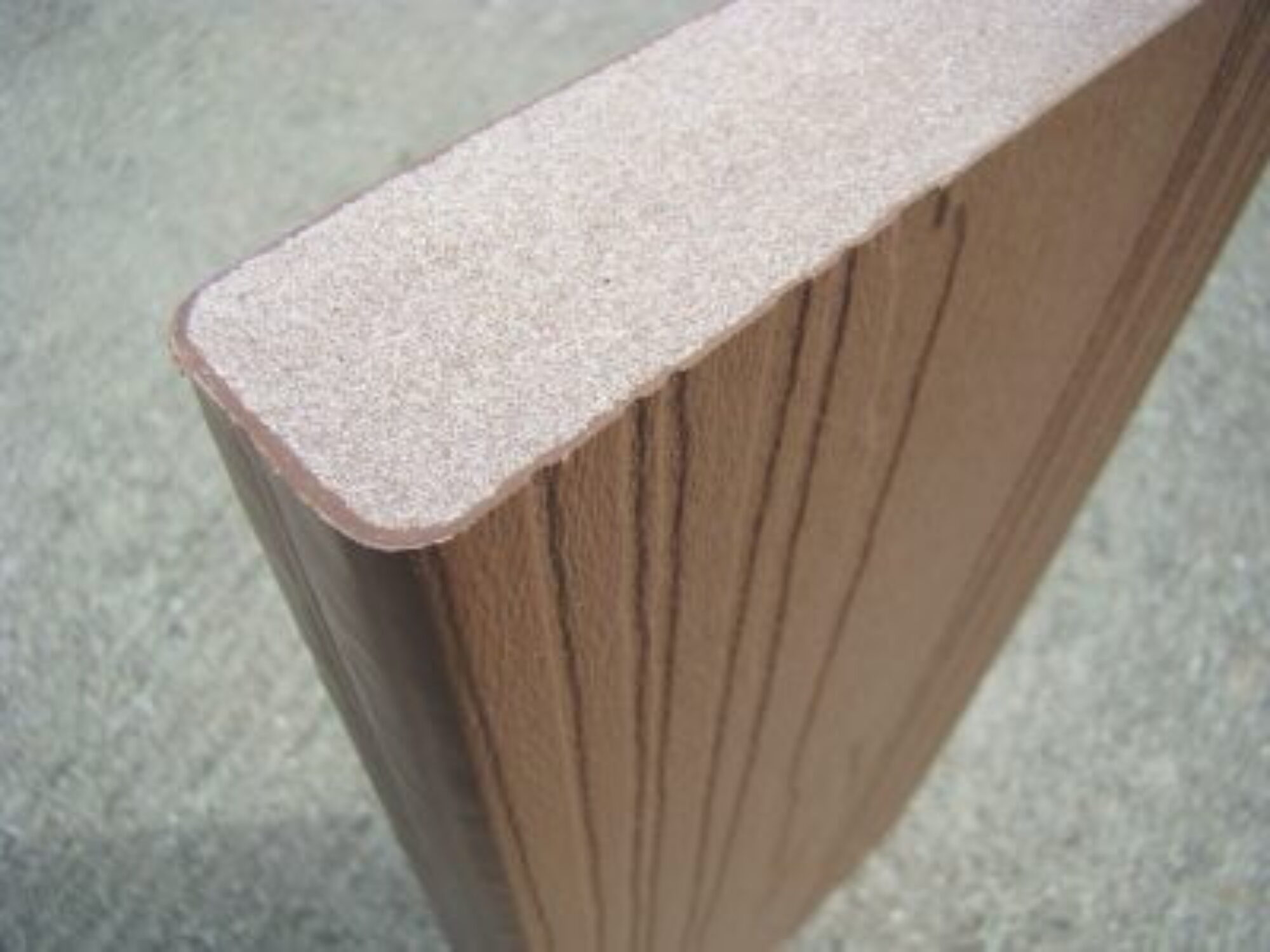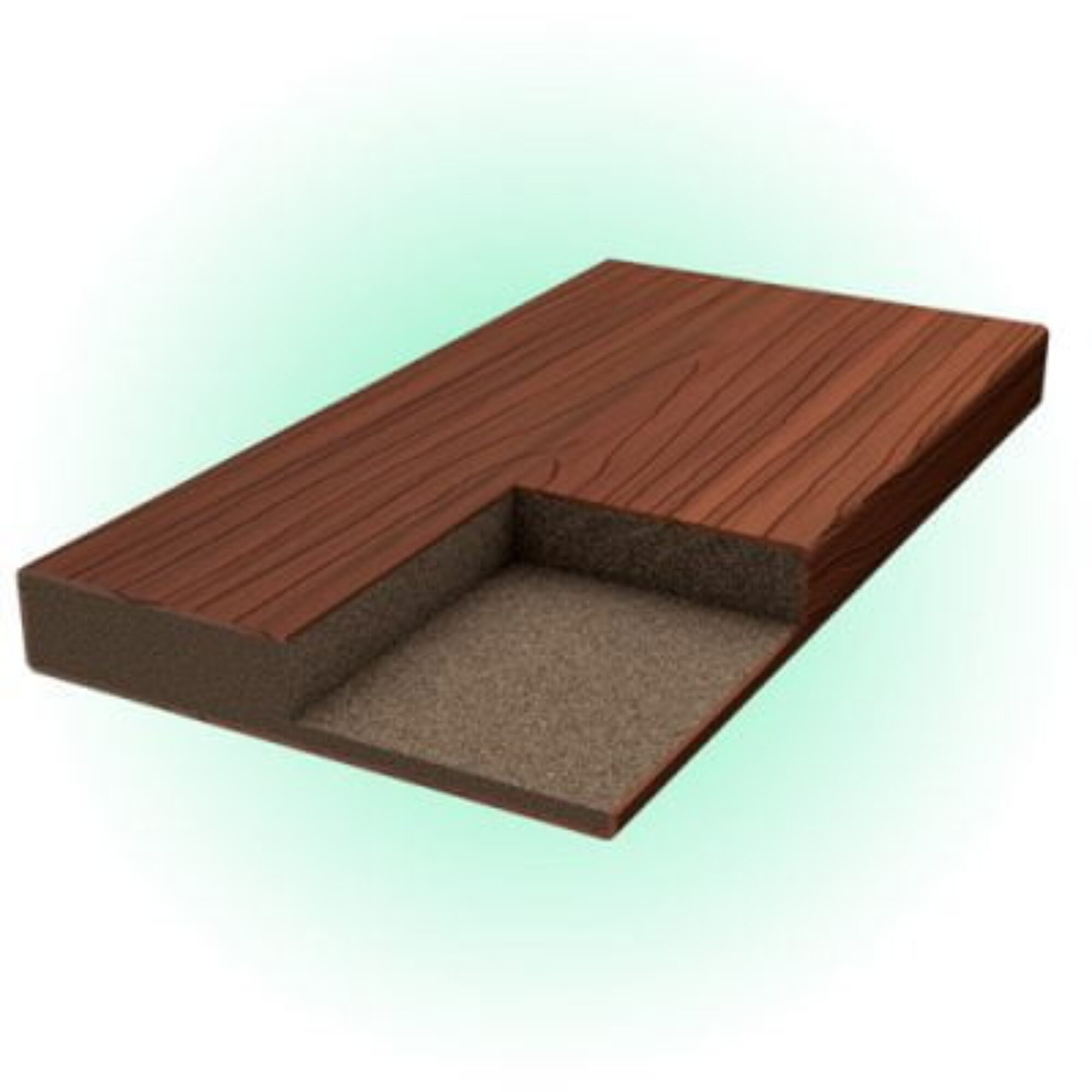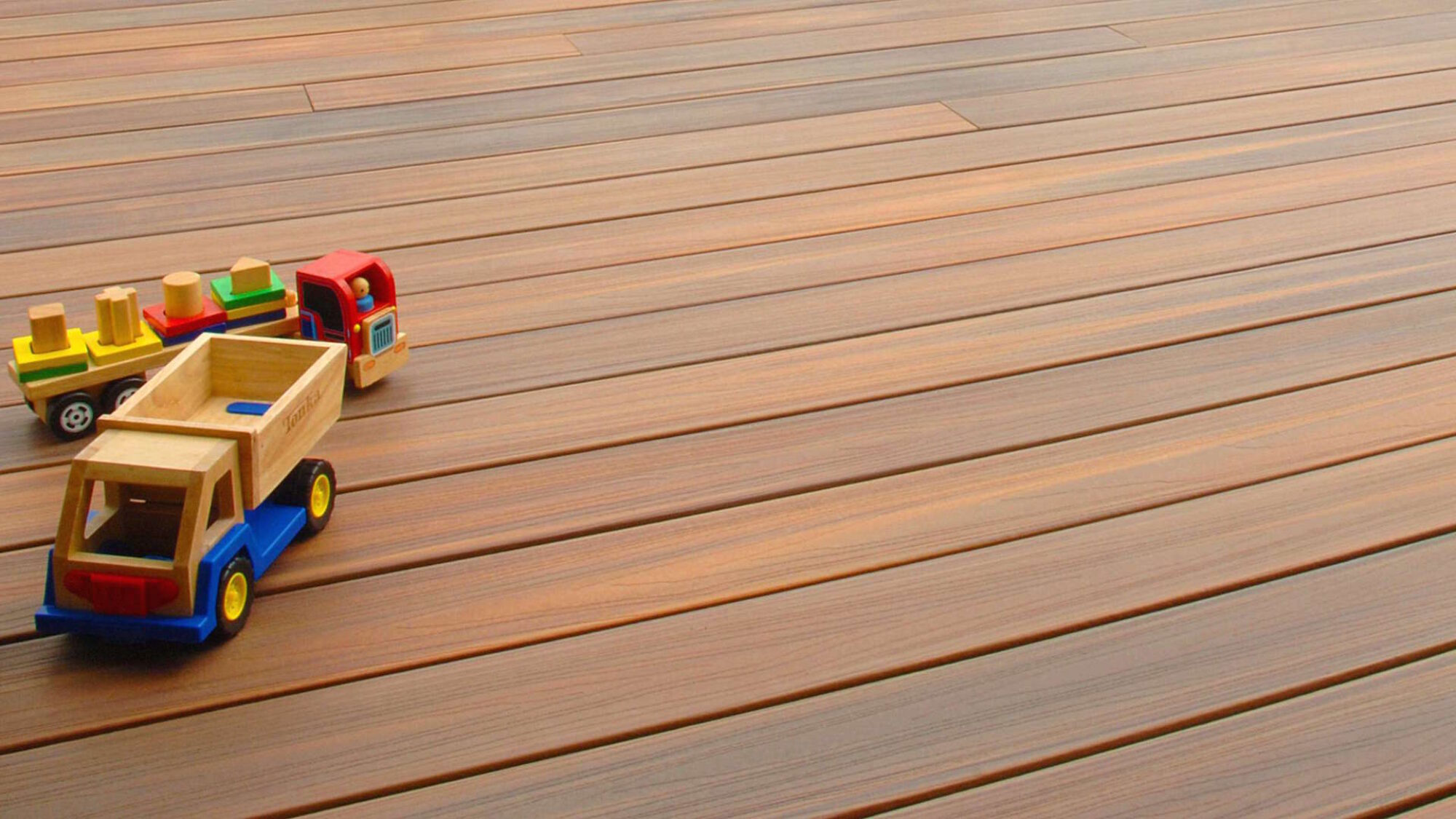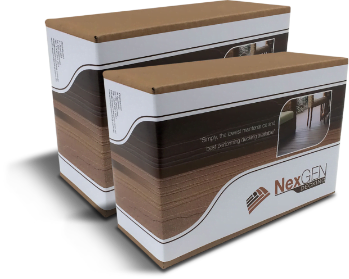In comparison to a wooden deck, capped-composite decking holds a distinct advantage. By looking into how composite decking is made, we can see why it is not subject to rot, warping, insects, decay, splintering, cracking, or fading. Even better, to make it look brand new, you won’t need to sand, seal, or refinish it; just give it a nice soapy bath from time to time.
So how is Composite Decking Made? Whether capped or uncapped (we’ll get to the importance of that in a moment), composite deck materials are made of wood particles mixed with plastics. The wood can consist of sawdust, wood chips, or wood fiber pieces; basically the manufacturing starts by reusing scrap materials. In addition, the plastics are generally recycled/recovered (although they can be virgin plastics, as well). By combining two things most people would see as waste, our manufacturer, Fiberon decking, creates a durable, long-lasting, and beautiful deck-building material.
After finding the right ingredients, the manufacturer then carefully mixes the wood and plastic components. This mixture is heated, until malleable, and formed into into board-shaped lengths. After cooling, it solidifies to create a dense and solid core. The wood/plastic core is then wrapped with a material to provide a finish. Actually, it is more than wrapped. It is fusion-bonded in the manufacturing process; also known as “capped.”
And it is here that the uncapped versus capped versions of composite deck boards matter. Earlier versions of composite decking featured uncapped varieties which happened to fade and stain, as well as fall prey to mould and mildew.
So manufacturers found immense value in “capping” their product. Having seen the difference in durability and quality, NexGEN only sells capped materials. And our manufacturer uses a patented formula, Permatech, that has been specially formulated to be UV resistant. In addition, all four sides are capped on most ranges, making the boards reversible in the building process (this means more grain options as well as less waste). Our product is manufactured in North Carolina, USA by Fiberon composites. For nearly two decades, Fiberon has been working with families and perfecting their craft to create beautiful, easy-to-own outdoor spaces.



Contact Us
Let us help you, start building your durable, eco-friendly, and beautiful deck.
Products
Gallery
Contact
Direct Office Numbers
Adelaide – (08) 6316 0469
Brisbane – (07) 3041 6065
Melbourne – (03) 8672 6444
Sydney – (02) 8072 6220

